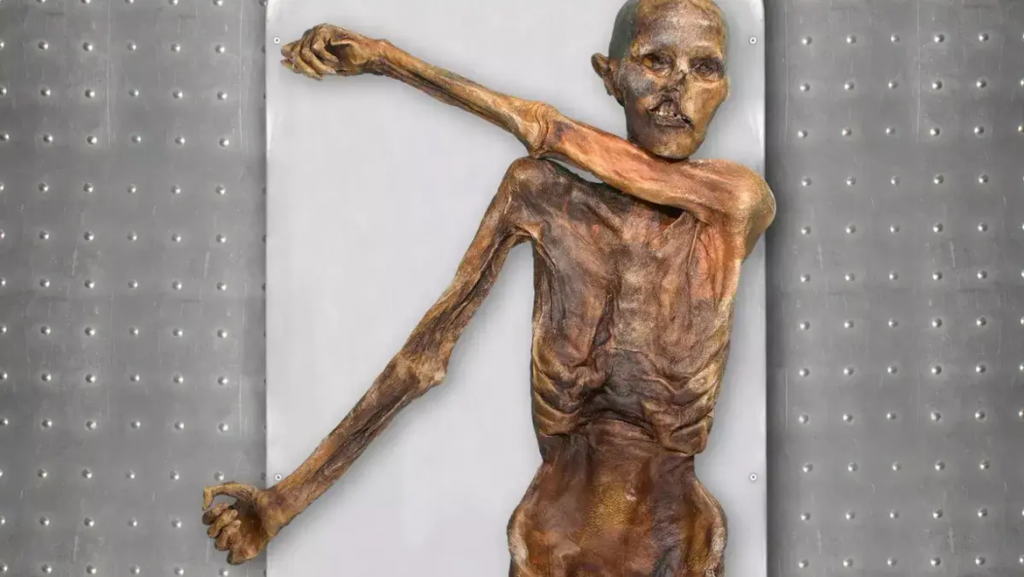In the heart of the Tyrolean Alps lies the enigma of Ötzi the Iceman, whose frozen remains, discovered by hikers in 1991, have positioned him as the world’s most exhaustively studied ancient corpse. As the muse of countless inquiries, from the circumstances of his violent demise to his identity and mountainous resting place, Ötzi continues to captivate beyond the bounds of archaeology.
A recent study leveraging genetic insights drawn from Ötzi’s pelvis has punctured the veil, revealing hitherto undisclosed facets of this 5,300-year-old relic. An unexpected twist in the tale surfaces as the analysis discloses Ötzi’s dark skin tone, deep eyes, and a likely bald pate—distinctly diverging from typical depictions of a fair-skinned figure with abundant hair and a beard.
Contrary to conventional beliefs that his skin had darkened due to the mummification process, Albert Zink, the head of the Institute for Mummy Studies at Eurac Research, a research center in Bolzano, elucidates, “It seems that the dark skin color of the mummy is quite close to the Iceman’s skin color during (his) lifetime.” The notion that Ötzi possessed dark skin is not as astonishing as it may appear; Zink points out that the skin pigmentation of Europeans during Ötzi’s era was likely darker than that of their present-day counterparts.
This revelation aligns with the historical context, wherein early European farmers harbored darker skin, adapting to the period’s climatic and dietary shifts. “Farmers consume much less vitamin D in their diet than hunter-gatherers,” Zink elaborated. Ötzi’s diet, primarily comprised of meat such as ibex and deer, further solidifies this narrative.
Johannes Krause, the coauthor and director of the Department of Archaeogenetics at the Max Planck Institute for Evolutionary Anthropology, underscores the disparity between the famous reconstruction and Ötzi’s natural appearance, remarking, “It is remarkable how the reconstruction is biased by our preconception of a Stone Age human from Europe.”
While Ötzi’s genetic analysis suggests male pattern baldness, the extent of his hair loss during his lifetime remains uncertain. Archaeologist Lars Holger Pilø, a co-director of the Secrets of the Ice project, postulates that Ötzi’s current state of near-complete baldness might have transpired after his demise due to the decomposition of the epidermis.
In the annals of scientific progress, Ötzi’s genome sequencing from DNA extracted from his pelvis surpasses the earlier genome assembled in 2012, when ancient DNA studies were nascent. Furthermore, this study disentangles a perplexity in Ötzi’s lineage, shedding light on his genetic affinity with early Anatolian farmers rather than his European contemporaries.

